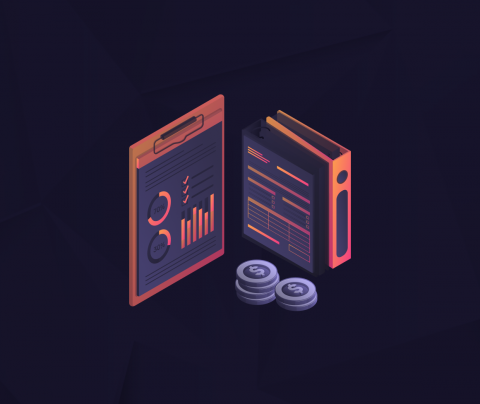Some drives get you from point A to point B. And then some roads become the destination.
Facebook can be both a tool and a journey. When it comes to affiliate marketing, it’s the platform with unmatched reach, addictive user attention, and the potential to scale like crazy. But here’s the rub: most people screw it up.
They think it’s as easy as slapping a link into a post, joining a few groups, and waiting for commissions to roll in. And when nothing happens? They blame the platform. They blame the algorithm. They blame the niche.
But the truth is simpler. They didn’t understand how to promote affiliate links on Facebook the right way.
Let’s talk about why that is – and how to fix it.
Why Promoting Affiliate Links on Facebook Is So Tricky
At first glance, Facebook seems like the perfect playground for affiliate marketers. Billions of users. Rich audience targeting. A content feed that practically begs for creative storytelling. But what makes it powerful also makes it…dangerous.
The platform is hostile to marketers who treat it like a billboard.
Unlike Google, where users come in with intent (“best budget drones under $200”), Facebook users are passive. They’re scrolling through vacation pics, reading memes, and lurking in comment sections. They’re not looking for your offer, which means your job is to interrupt them just enough to make them care.
And that’s where 99% of affiliates fail.
The typical mistake? Treating Facebook like a traffic faucet instead of what it is – a massive, ever-shifting social ecosystem that punishes laziness and rewards nuance. You can’t just drop a link and pray. That’s not marketing. That’s noise.
The Invisible Problems That Kill Your Campaigns
Let me paint a picture.
You’ve found an affiliate offer that looks solid. Maybe it’s in a hot vertical – health, wealth, relationships. You grab your link, write a catchy caption, maybe run a boosted post for $50, and wait. A few clicks, zero conversions. You try again. Still no traction.
And here’s where most people give up.
They assume the offer doesn’t convert. Or their audience isn’t “warm” enough. Or the platform is just broken.
But what’s happening is something much more technical – and much more solvable. The problem isn’t what. It’s the how.
See, Facebook’s algorithm doesn’t care if you’re promoting an affiliate product, your blog, or a cat video. It cares about the user experience. And affiliate links, especially those with tracking parameters, aggressive headlines, or slow-loading redirects, often trigger red flags.
Even if your ad gets approved, your quality score drops. Your CPMs spike. Your reach dies. And you’re left wondering what went wrong.
This is the part that drove me crazy when I started. I knew the product converted elsewhere. The landing page was solid. The creative looked good. But Facebook just refused to play ball.
That was the moment I realized I wasn’t just running traffic – I was managing infrastructure.
Which brings us to the real problem most affiliate marketers face…
The Backend Chaos Nobody Warns You About
Let’s get brutally honest: running affiliate campaigns on Facebook is technical. It’s not just about writing clever ads or choosing a sexy niche. It’s about building a backend system that works – even when Facebook throws a tantrum, your CTR dips, or fraud creeps into your leads.
Here’s what you’re up against:
- Incomplete tracking data that makes optimization impossible
- Bots and bad traffic are messing up your pixel
- Delays or blocks in redirect chains that crush conversion rates
- No way to analyze lead quality in real time
- Manual workflows that kill your scalability
And the kicker? Most people don’t even realize these problems are happening. They think they’re just “bad at Facebook ads.” But really, they’re operating blindfolded – driving 100 mph with no dashboard.
If you’re nodding along right now, feeling a little called out – good. That means you’re about to break through.
Two Ways to Promote Affiliate Links on Facebook
Let’s cut through the noise. If you’re serious about promoting affiliates on Facebook, you’ve got two viable models.
1. Organic content strategy (slow, free, low risk):
You build a personal brand. Join niche groups. Share value-rich posts and answer questions. Occasionally, you drop links (carefully cloaked) naturally, usually through a lead magnet, a mini-guide, or a freebie. Over time, you build trust, grow your audience, and earn passive clicks.
2. Paid traffic strategy (fast, risky, scalable):
You set up campaigns through Facebook Ads Manager. You create bridge pages that warm up the user before redirecting to your affiliate link. You test multiple ad angles, creatives, and landing pages. You optimize based on real data, scale what works, and cut what doesn’t.
Both work. But if you want to grow – grow – you need to master paid traffic. And that means solving the backend chaos.
Why the “Backend” Is the Real Game
Here’s the part they don’t teach in free YouTube tutorials:
Affiliate marketing isn’t just about sales – it’s about systems.
It’s about what happens after the click. Do you know where that traffic is going? Can you trace every lead’s quality and origin? Can you spot fraud before it eats half your ad budget?
This is where platforms like Hyperone come in.
Now, I’m not here to pitch you with shiny buzzwords. But if you’ve ever struggled with tracking, with setting up UTM parameters, with figuring out why your best-performing ad suddenly tanked, then you need a system.
Hyperone gives you that. End-to-end clarity. A real-time view into how your traffic behaves. A way to block bots, reroute low-quality leads, and automate what used to take hours.
I didn’t fully get it until I tried to scale my first finance campaign and watched my ROI collapse under bad leads. Once I added a transparent tracking layer with fraud analytics baked in? Everything changed. I finally felt in control.
The Real Reason Facebook Affiliate Campaigns Fail
It’s not the offer. It’s not the targeting. It’s not even the creative. It’s an infrastructure failure.
You can have the best campaign in the world, but if your redirect takes 4 seconds to load, you lose. If Facebook’s AI detects a weird tracking domain, you lose. If you can’t track conversions properly, you lose.
That’s the core truth behind most affiliate campaigns that never scale.
So when people ask me “How do I promote affiliate links on Facebook?”, I don’t start with copy or angles. I start with the setup. With infrastructure. Making sure that every click gets tracked, every lead gets scored, and every source gets logged.
That’s the boring stuff that makes real money.
Final Thoughts: This Is Where You Win
If you want Facebook to work for affiliate marketing, you need more than motivation. You need a system that removes the guesswork, gives you real data, and protects you from the stuff you don’t see coming.
I’ve watched far too many smart marketers quit – not because they lacked talent, but because they lacked infrastructure. They tried to duct tape it all together with spreadsheets, free link shorteners, and hope.
Don’t be that person. If you want control – real control – start by fixing the backend. Use a tool like Hyperone to bring transparency and automation to your setup. Then run your campaigns with confidence, knowing that every click is accounted for, every lead tracked, and every penny spent pushing you toward profit.
Because Facebook isn’t dead. It’s just demanding. And once you learn how to play the game right? It’ll change everything.











